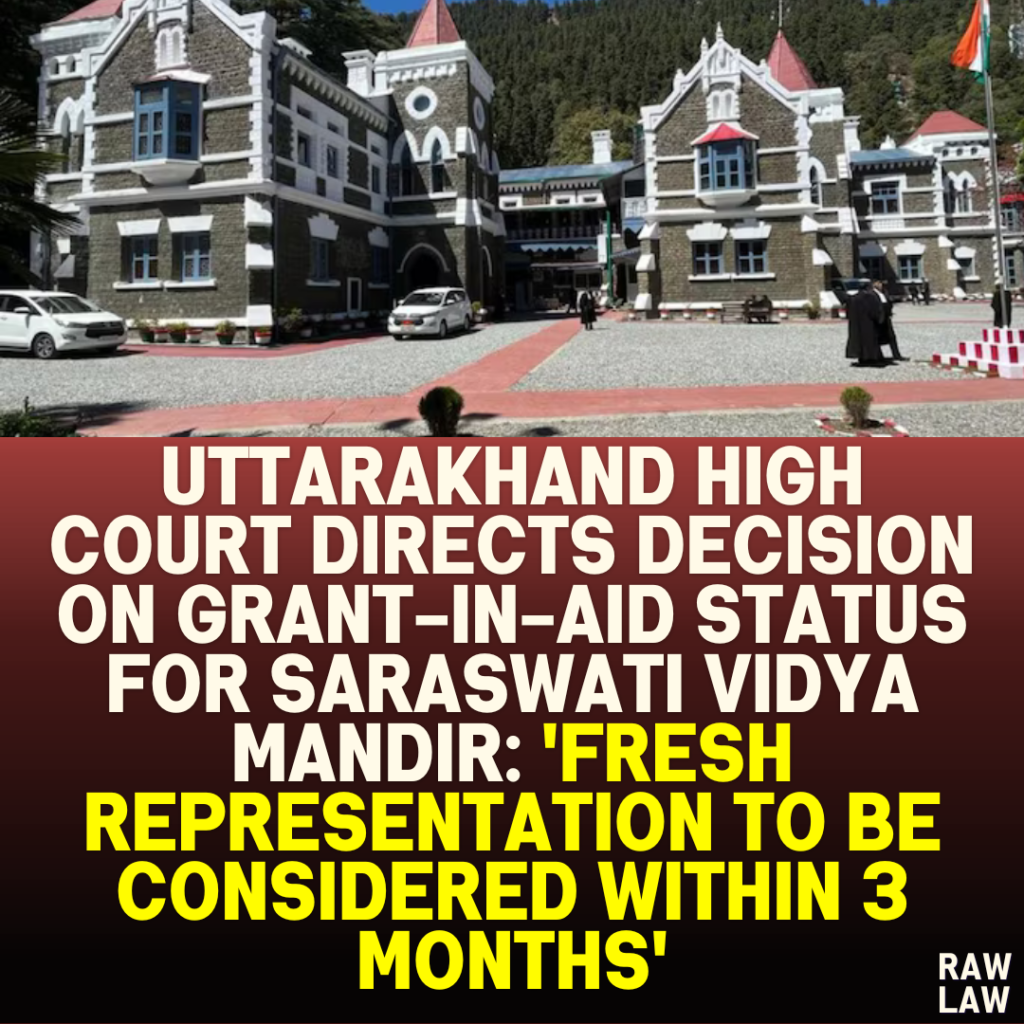Court’s Decision:
The Uttarakhand High Court disposed of the writ petition, directing the petitioner (the Committee of Management) to file a fresh representation to the Additional Secretary, Elementary Education, Government of Uttarakhand, within one week. The court ordered the respondent to decide on this representation within three months from the date of its receipt.
Facts:
- The petitioner is the Committee of Management of a recognized, non-aided primary school, Saraswati Vidya Mandir, Kanakpal, Janta Higher Secondary School, located in District Tehri Garhwal.
- The petitioner applied to the Director, Elementary Education, Department of Education, Uttarakhand, seeking to bring the institution under grant-in-aid.
- Respondent No. 4, the Chief Education Officer, Tehri Garhwal, confirmed the inclusion of the petitioner’s school in the list of unaided schools in District Tehri Garhwal, as communicated on March 30, 2016.
- This information was forwarded to the Additional Secretary, Elementary Education, Government of Uttarakhand, on November 23, 2016.
- Despite multiple representations, no decision had been made regarding the grant-in-aid status of the school.
Issues:
- Whether the petitioner’s school is entitled to be brought under the grant-in-aid scheme.
- Whether the authorities have failed to decide the pending application within a reasonable time.
Petitioner’s Arguments:
- The petitioner argued that despite repeated representations, no action was taken by the respondents on their application for grant-in-aid.
- The petitioner submitted that the delay in deciding the application is unjust and the matter needs prompt attention.
Respondent’s Arguments:
- The respondents did not take any substantial action to counter the petitioner’s claims. Their primary submission was that any such decision must follow procedural norms and guidelines set by the Department of Education.
Analysis of the Law:
- The court emphasized that administrative delays in deciding the petitioner’s application impede the rights of the institution under established legal principles.
- The Uttarakhand High Court referred to the procedural guidelines that necessitate timely decision-making by administrative authorities, especially concerning educational institutions’ grant-in-aid status.
Precedent Analysis:
No precedents were specifically cited or analyzed in the order. The court relied primarily on procedural fairness and administrative responsibility in its reasoning.
Court’s Reasoning:
- The court acknowledged the petitioner’s repeated representations and found the delay by the respondents unjustified.
- The court held that a fresh representation should be filed and directed the Additional Secretary to address the grievance within a stipulated timeframe, considering the procedural history and the lack of response from the authorities.
Conclusion:
The writ petition was disposed of with directions to the petitioner to make a fresh representation within one week and for the respondent to decide on the same within three months of its receipt.
Implications:
The court’s decision emphasizes the need for timely administrative action and provides a structured mechanism for addressing educational institutions’ grievances. This order also highlights that procedural delays can be effectively challenged through judicial intervention. The ruling could set a precedent for similar cases where educational institutions seek inclusion in government grant-in-aid schemes.




Pingback: Bombay High Court Dismisses Petition Filed by Developer Against Occupant: "Attempt to Misuse Section 9 of Arbitration Act" - Raw Law